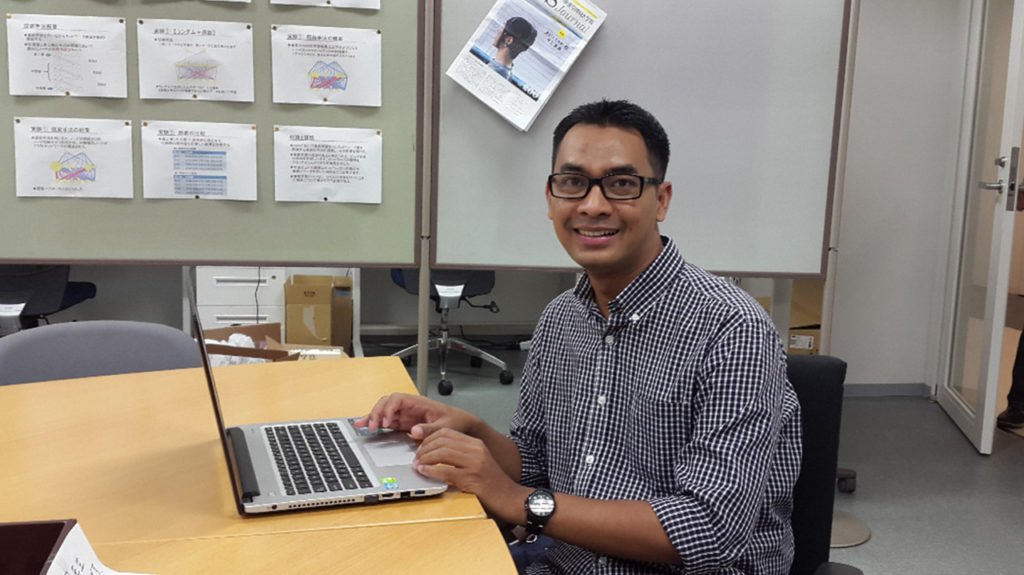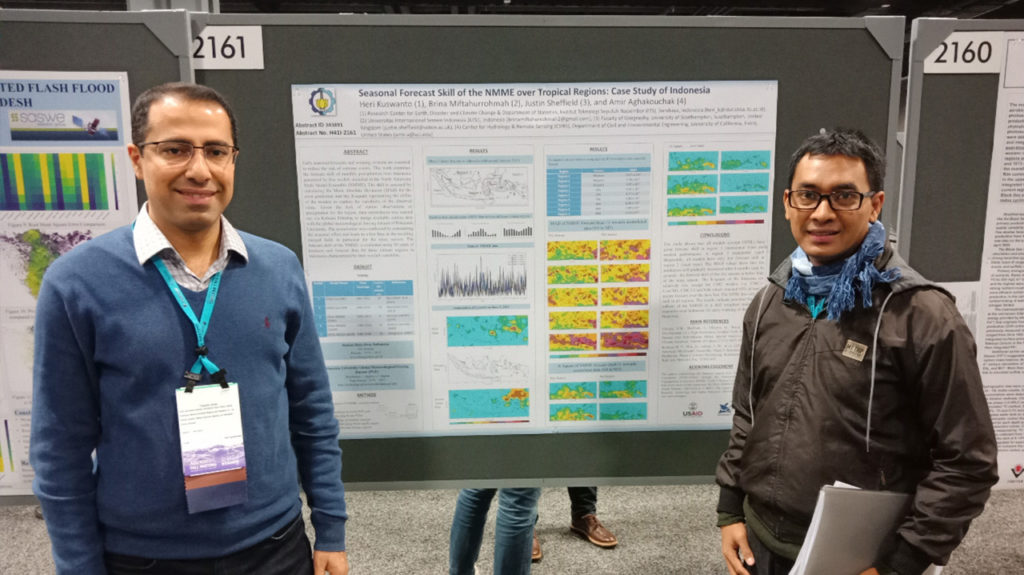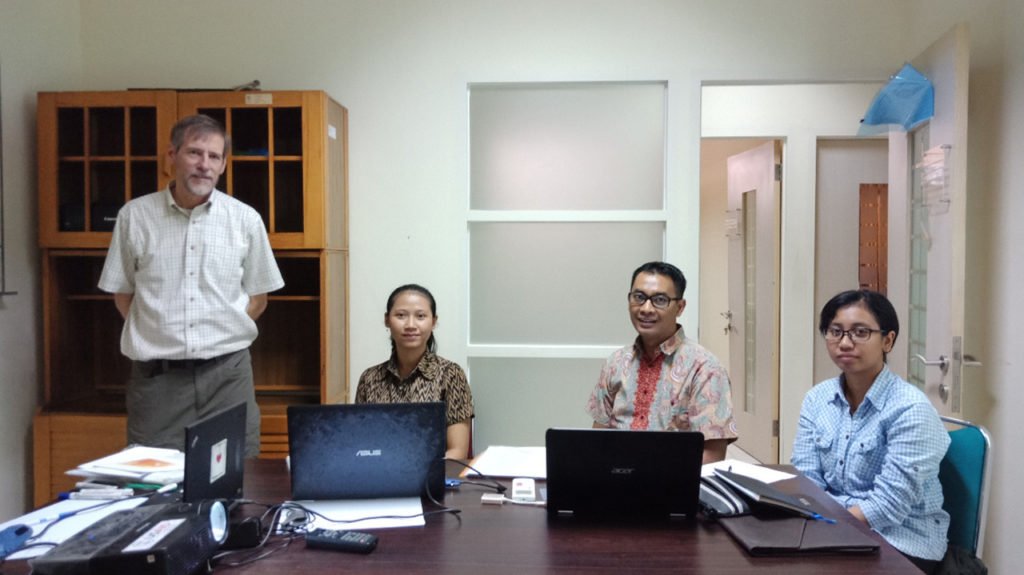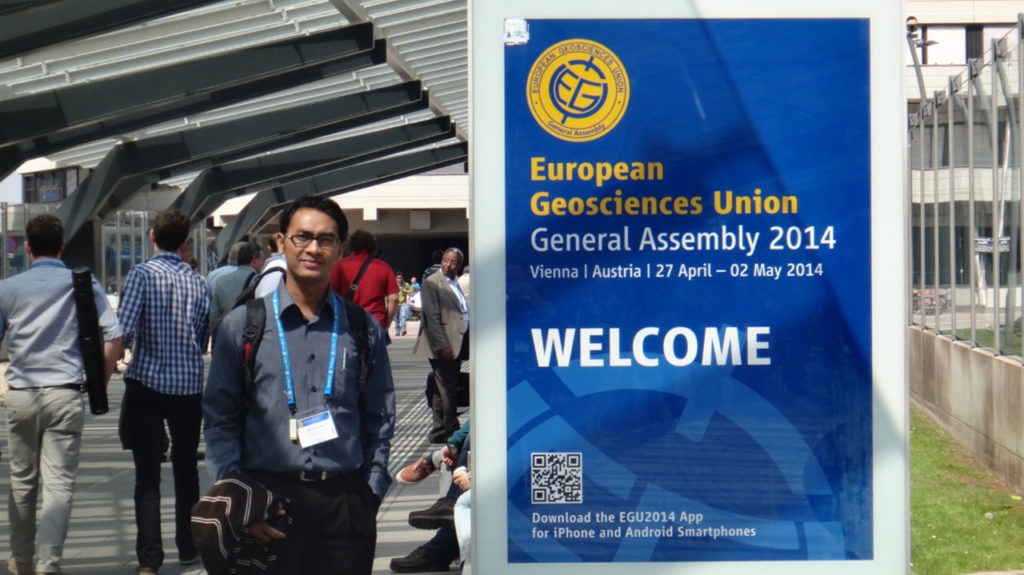Achieving Professor Title at the Age of 39, Heri Raises The Solution for Uncertainties in the Big Data Era

Prof. Dr. rer pol Heri Kuswanto MSi while conducting visiting research at the Tokyo University of Science, Japan
ITS Campus, ITS News – Institut Teknologi Sepuluh Nopember (ITS) will inaugurate ten new professors on Wednesday (31/3). One of them is Prof. Dr. rer pol Heri Kuswanto MSi, who was confirmed as a professor of statistics at the Age of just 39 years old by raising a speech about the use of statistical computing as a solution to overcome uncertainty in the era of big data.
In his oration, Heri, who was recorded as the youngest professor at this inauguration, explained that to make the right decision, it is necessary to have the most optimal approach. “For this reason, it is necessary to use statistical computations as a solution in overcoming uncertainty in this era of big data,” said the lecturer who was born in Gresik, March 26, 1982.
The statistical computation expert applies an ensemble approach to produce better predictive performance than just using a single model. Heri quoted the famous saying that the only thing sure – is uncertainty, which means that luck is always there or particular. Therefore, it is necessary to have an approach to reduce tension in various phenomena that are agile, uncertain, complex, and ambiguous. One of the steps commonly used is statistical modeling.
The Deputy Chairperson of the Indonesian Association of Disaster Experts (IABI) explained that uncertainty or what is commonly called probability could be answered with two approaches in statistics. The first way is with a theoretical approach by justifying the truth of the properties of the assessment that must be fulfilled in statistical rules.
However, he continued, certain cases could not be resolved with this approach. “So it is necessary to use a second approach, namely computationally, which has now become the backbone of modern data science,” explained Heri. Statistical modeling can be a solution for uncertainty because of its benefits in various interests, both data exploration to obtain valuable information in data, prediction, classification, clustering, etc.

Prof. Dr. rer pol Heri Kuswanto MSi (right) with Prof. Amir Aghakouchak at the American Geosciences Union conference in Washington DC
Heri added that the significant data era conditions could no longer use classical statistical models for accurate results. This is because extensive data creates the possibility of sample bias and a weak degree of interdependence but extends to the data, which adds to the uncertainty.
However, the statistical methods currently being developed are still dominated by selecting the best model or selection. This model is done by comparing several ways and looking for procedures with the smallest average error value. However, this means that this chosen model is not the best model at one or several specific points. “This shows that in terms of the model, there is uncertainty in the selection method earlier,” said the Director of ITS Postgraduate and Academic Development.
Therefore, the emergence of the concept of combination is based on the fact that one model does not always dominate another model. Heri said that in the combination model, we will not choose the best one. Instead, it combines the outputs of existing models by giving certain weights according to their performance. This aims to capture uncertainty, and this concept is called an ensemble approach.

Prof. Dr. rer pol Heri Kuswanto MSi (second from right) when receiving a research visit from Prof. Richard Grotjahn from the University of California, United States
There are many types of methods in the ensemble approach. Some of the methods used by Heri are Random Forest (RF), Logistic Regression Ensemble (Lorens), and Bayesian Model Averaging (BMA). The first method, namely RF, is an algorithm used to classify large amounts of data. RF classification is carried out by merging trees by conducting training on the data samples that are owned. The use of trees (trees) will affect the accuracy that will be obtained for the better.
“Some of my research using the RF method in predicting drought in East Nusa Tenggara using the TRMM and MERRA outputs and research on the performance of Random Forest compared to other methods to detect epilepsy cases,” said the doctor of Statistics, a graduate of Leibniz Hannover University, Germany.
The second method, Lorens, is an ensemble approach for classification based on logistic regression. Lorens can solve data problems with large dimensional data that cannot be modeled by logistic regression. By utilizing this method, Heri has produced several studies, such as detecting enzymes in drugs and predicting Alzheimer’s cases.
Meanwhile, the third method used by recipients of the Harvard Residency Program on Solar Geoengineering is BMA. According to him, BMA can choose the best model that involves model uncertainty by averaging all possible models’ posterior distribution. BMA can determine which variables are relevant to existing data.
“The BMA method is often used as an approach to calibration so that a prediction is obtained in the form of an interval that is not too wide but has high accuracy,” added the Coordinator of the Research and Development Division of the Indonesian Statistical Association (ISI).

Prof. Dr. rer pol Heri Kuswanto MSi attended the 2014 European Geosciences Union
Heri has collaborated with the Meteorology, Climatology, and Geophysics Agency (BMKG) regarding the ensemble forecast application using BMA to predict Indonesia’s weather by utilizing the HyBMG output. This prediction is also beneficial as a reference planting calendar for farmers.
Heri is also developing a drought prediction system in Indonesia with output from the North America Multimodel Ensemble (NMME), calibrated using BMA. “In the future, it is hoped that this system will be able to help stakeholders related to short-term and seasonal weather predictions, as a mitigation measure for drought disasters, as well as other hydrometeorological measures,” explained Heri.
Heri is also developing a drought prediction system in Indonesia with output from the North America Multimodel Ensemble (NMME), calibrated using BMA. “In the future, it is hoped that this system will be able to help stakeholders related to short-term and seasonal weather predictions, as a mitigation measure for drought disasters, as well as other hydrometeorological measures,” explained Heri.
In the end, Heri expressed her happiness to be a young professor who can make her institution and family proud. However, this title becomes a burden and a challenge for Heri because the image attached to a professor is work. Even though he is busy with various organizations, this man, who likes to work in the laboratory, is committed to continuing to devote his knowledge to solving real social problems. “I want to make this the beginning of everything, the beginning to be even more real,” he concluded. (ITS Public Relations)
Reporter: Gita Rama Mahardhika
Related News
-
ITS Wins 2024 Project Implementation Award for Commitment to Gender Implementation
ITS Campus, ITS News —Not only technology-oriented, Institut Teknologi Sepuluh Nopember (ITS) also show its commitment to support gender
March 29, 2021 18:03 -
ITS Professor Researched the Role of Human Integration in Sustainable Architecture
ITS Campus, ITS News –The developing era has an impact on many aspects of life, including in the field
March 29, 2021 18:03 -
ITS Sends Off Group for Joint Homecoming to 64 Destination Areas
ITS Campus, ITS News — Approaching Eid al-Fitr, the Sepuluh Nopember Institute of Technology (ITS) is once again facilitating academics who want
March 29, 2021 18:03 -
ITS Expert: IHSG Decline Has Significant Impact on Indonesian Economy
ITS Campus, ITS News — The decline in the Composite Stock Price Index (IHSG) by five percent on March 18,
March 29, 2021 18:03
